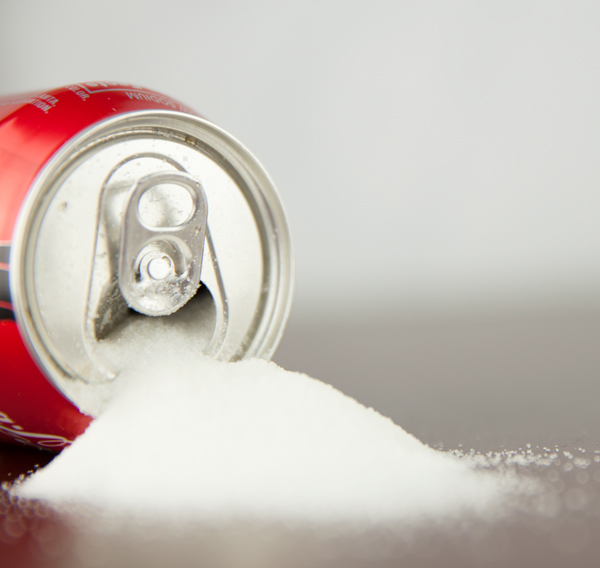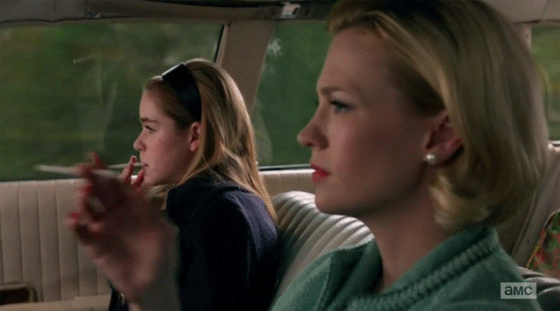Producers of soda should stop copying tobacco companies

Once upon a time, smoking was ubiquitous. Cigarettes were common and cheap. In addition to temporary pleasure, they did not offer anything. Most people probably know that smoking is not good for health, but no one was surprised at the prevalence and normality of their use.
Today everyone drinks soda. It is common and cheap. In addition to temporary pleasure, she does not offer anything. Most people probably know that soda is not good for health, but no one was surprised at the prevalence and normality of its use.
')
Today, clear evidence suggests that excessive smoking leads to diseases that threaten your life.
Today, clear evidence suggests that excessive consumption of sweet water leads to diseases that threaten your life.

Images from the series "Mad men"
Over the past decades, as we understand the role of food in increasing obesity and related health problems, the work of the food industry comes under more and more scrutiny, and its actions deserve comparison with the tobacco industry.
“Of course, there are differences between food and tobacco as substances,” as Kelly Brownell [Kelly Brownell] wrote in her 2009 paper , published in The Milbank Quarterly. "The most obvious of them: people need to eat to maintain life and health, and smoking, as former health minister Joseph Califano said, is 'slow suicide'."
But, despite the differences, “there is a strong similarity in the way these industries have behaved, faced with fears of causing harm to their products.”
Soda pops are not as lethal as cigarettes, but just because M-80 explodes weaker than dynamite does not mean that you will blow it up in your hand. Unlike other foods, one cannot say that people need to drink sugary drinks to maintain their health and life. Therefore, comparing them with cigarettes is not too far from the truth, especially if you start to compare the behavior of manufacturers of cigarettes and soda.
The report of the London-based organization Action on Smoking and Health (ASH, smoking and health actions), published in the late 90s, described in detail the deception that the tobacco industry has been doing for decades, with links to leaked documents and information from informants. Despite knowledge of addiction to their products and their health risks, the tobacco industry has been systematically involved in avoiding responsibility and entangling scientific data, while discussing on the sidelines the possibility of producing "safe cigarettes", from which filters and then "light" cigarettes appeared . The beverage industry also behaved. She denies the connection between the consumption of soda and poor health with obesity, but at the same time offers dietary, low-calorie drinks, as well as drinks with low sugar content.
Minimizing their contribution to society's obesity, soda makers love to praise their efforts to reduce obesity, promote exercise and reduce calorie diets. So where is the truth? If sugary drinks do not have such a strong effect on the obesity of citizens, why then does the industry try to reduce the amount of sugar in their products?
The American Beverage Association (ABA) directs everyone to Let's Let's Clear It Up website, which states that it is “dedicated to information disclosure and the separation of facts from inventions.” Here is an example of “clarifying the situation” from ABA:
“MYTH: The obesity epidemic can be reversed if people stop drinking soda.
FACT: sweetened beverages are responsible for only 7% of the calories in the American diet, according to government data. ”
What can I say.
First, no professional or organization stated that stopping the consumption of soda will stop the obesity epidemic. But most of them agree that sugary drinks make a major contribution to the epidemic and recommend reducing their consumption. This is the position of WHO , the Centers for Disease Control and Prevention and the Harvard School of Public Health for them. T.H. Chen .
In my opinion, Dr. David Katz came up with an analogy with a sandbag. No one will say that one sandbag will stop the flood, but all bags are equally important. One is not enough, and the barrier will be broken. So with obesity. In many cases , different solutions are needed. But we need a strategy, and the definition of the main causes of obesity and the fight against them - this is a logical step. In combating an increase in obesity, it will be irresponsible to ignore the consumption of soda.
And 7% is not so little. Earlier, WHO announced that “in terms of nutrition, people do not need sugar. When sugar is consumed, WHO recommends limiting it to 10% of the total energy requirement, and not to exceed 5% to improve health. ”
7%, though less than 10%, they represent only calories derived from sugary drinks, but not from all sugar-containing sources. In 2008, according to statistics for US citizens, the average sugar consumption was 15% of all calories. Therefore, most people no longer follow the recommendations of consumption, and if they want to comply with them, removing liquid calories is a great way to start.
This is just one example of the “debunking myths” conducted by the soda industry, a blatant attempt to manipulate the role of their product in the poor health of Americans. They use less obvious tactics to win public approval through charitable activities known as Corporate Social Responsibility (CSR).
In the work of 2012, a comparison of the tactics of CSR inherent in the tobacco and aerated industries was made in the journal PLOS Medicine, and many parallels were found. "CSR campaigns from soda producers repeat campaigns from tobacco producers, focusing on customers and preventing them from restricting their activities."
But their influence extends beyond public opinion, and even extends into science and legislation. Recently, the New York Times and the Washington Post denounced attempts by the sugar and soda industries to discredit health professionals from as early as the 1960s.
In a letter to Andy Bellatti, Dietitians for Professional Integrity, director of strategy for the organization " Dietitians for Professional Integrity], said:" Sponsoring the health organizations industry is a well-documented strategy for reducing anxiety, giving the appearance that the company is "part of the solution to the problem", and giving rise to capping critics. Along with the appearance of public health support, the industry spends millions of dollars and influences politicians to change health care policies that threaten the work of this industry. ”
More recently, Julia Belluz from Vox described that ABA spent $ 30 million on eliminating additional soda taxes in four US cities. There was evidence that such taxes would reduce the consumption of soda .
The public organization Ninja Health [ Ninjas for Health ] caught the beverage industry bribing nutritionists who tweeted with a criticism of soda taxes.
Last year, I reported on attempts by industry to influence the mayors of US cities, offering to sponsor programs to improve the health of citizens (guess if recommendations to reduce the consumption of sugary drinks were included in these programs?).
Evidence of attempts to influence the industry has accumulated enough for the whole book " Rules of Soda ", written by food expert Marion Nestlé. It describes how the industry is ready to do literally everything in order not to be responsible for the harm to citizens' health.
The question arises: if the actions of the soda industry are so reminiscent of the actions of the tobacco industry, will it suffer a similar fate? How normal will the use of liquid sugar in 10-20 years?
Source: https://habr.com/ru/post/398665/
All Articles